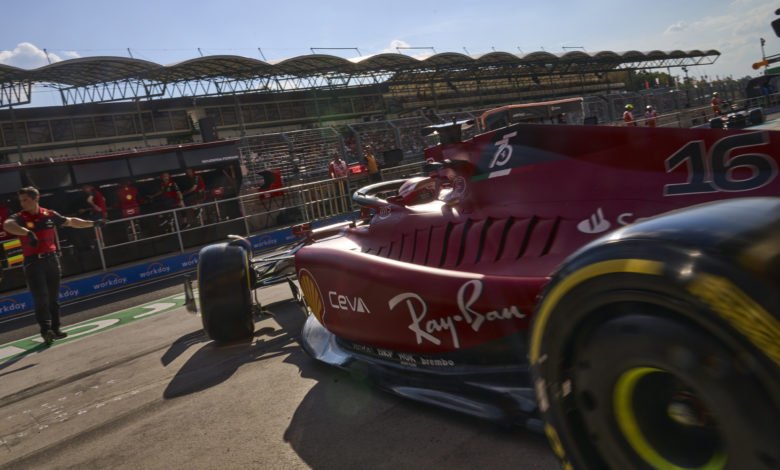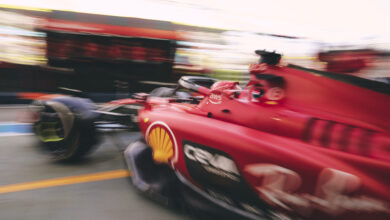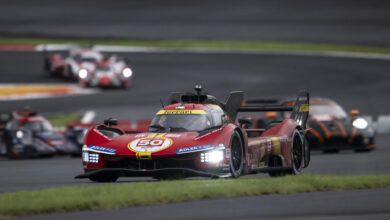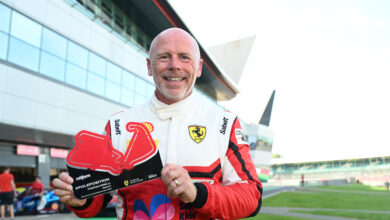Dutch Grand Prix – To Zandvoort: sea, wind, sand and banked corners
Maranello, 31 August 2022 – Scuderia Ferrari is back on track just a few days on from the race at Spa-Francorchamps for the Dutch Grand Prix at the Zandvoort circuit, which reappeared on the calendar last year after a 36 year absence.

Two banked corners. The circuit is 4.259 kilometres in length, built alongside the coastline, which is why the onshore wind is strong enough to upset the handling of the cars and cover the track in sand. The venue is famous for its significant changes in altitude and many of its corners are particularly popular with spectators. Definitely in that category is Tarzan, formerly known as Tarzanbocht, a hard right at the end of the start-finish straight, which boasts a slight banking. Then there’s the Rob Slotemakerbocht and Scheivlak, the rapid and blind right hander. For its return to the calendar last year, turns 3 and the final 14, were rebuilt with a 19 degree banking, which allows drivers to tackle them at a much higher speed than previously, while turn 3 also has two different lines. The track is narrow and twisty, so overtaking is not straightforward and the cars generally run a medium level of downforce. This means qualifying well is very important. There are two DRS zones, between turns 10 and 11 and on the main straight. In free practice the rear wing can also be opened in the last corner, the Arie Luyendykbocht.
Programme. The cars take to the track for the first hour of free practice at 12.30 local time on Friday, with the second one at 16. Noon on Saturday sees the start of the final free practice, prior to qualifying at 15. The 32nd Dutch Grand Prix to count for the Formula 1 World Championship gets underway on Sunday at 15.
Three questions to…
MARCO ADURNO, HEAD OF VEHICLE PERFORMANCE
1. Where does your passion for motorsport come from and how did you come to join Ferrari?
“My passion dates back to when I was a child, when I watched Formula 1 in my father’s arms and dreamed of one day being part of this world. It remained a dream until 2007, when I got the opportunity to join an English team, which set me on the path to fulfilling my desire to join Scuderia Ferrari, which I did in 2019″.
2. What can you tell us about the characteristics of the Zandvoort track?
“his track now has a completely different layout to that used in the Eighties, when the Grand Prix was a fixture on the calendar (up until 1985). Now it features a long sequence of medium and high speed corners that are very demanding for both car and driver. Steep banking of some corners is a unique feature with T3 and T14 banked to no less than 16 degrees”.
3. This track is very tough on tyres. How do you go about managing that situation?
“The characteristics of the track mean it is very hard on the tyres, especially the front ones. The key for qualifying is to run with high levels of aerodynamic balance in the medium and high speed corners, without compromising car stability. When it comes to the race, you are then looking for the right mix between a set-up that is kind on tyres, but still allows the drivers to use them the way he wants”.
Marco Adurno
Born on 9/6/1979
in Milan (Italy)
Photos of Marco Adurno are available for download at:
Ferrari Stats
GP entered: 1044
Seasons in F1 73
Debut Monaco 1950 (A. Ascari 2nd; R. Sommer 4th; L. Villoresi ret.)
Wins 242 (23.18%)
Pole positions 239 (22.89%)
Fastest race laps 259 (24.81%)
Total podiums 790 (25.22%)
Ferrari Stats Dutch GP
GP entered 30
Debut 1952 (A. Ascari 1st; G. Farina 2nd; L. Villoresi 3rd; C. De Tornaco ret.)
Wins 8 (27.67%)
Pole positions 7 (23.33%)
Fastest race laps 10 (33.33%)
Total podiums 24 (26.67%)
Dutch GP: facts & figures
3. Dutch drivers who have raced in Formula 1 powered by a Ferrari engine. The first was Robert Doornbos who took part in three races at the wheel of a Red Bull, finishing 12th in China and Brazil and 13th in Japan. The following year, Christijan Albers raced nine times for Spyker, his best results being 14th place in Bahrain and Spain. The most recent was Max Verstappen who raced four times in 2016 with Scuderia Toro Rosso. The reigning World Champion is the only driver on the list to score points, with a sixth place in Bahrain and an eighth in China. The Scuderia has never run a driver from the Netherlands in Formula 1.
6. The number in millions of wooden clogs produced annually in the Netherlands and these typical shoes, known as “klompen” are the most popular souvenirs. They were first seen around 1200, the footwear of choice for farm workers as they provided good grip and would not sink into the muddy soil. They also provided some insulation from the cold and damp throughout the day, even in the dead of winter when they would be lined with straw and paper for added warmth. From there the humble clog would evolve, with special ones produced for weddings, even fitted with steel blades for skating or spikes for walking on ice. The most common wood used is poplar, with willow another option.
7. The different versions of the Zandvoort track layout since 1939, the year it was first used. Up to 1971, the track was 4.193 kilometres long, extended to 4.226 the following year and to 4.252 in 1980. Then in 1990 a new 2.526 kilometre layout was favoured, at a time when it was used almost exclusively for Formula 3. After that the longest ever layout of 4.307 was used before the current track was finalised at 4.259 kilometres in 2020.
31. The number of times the Dutch Grand Prix has been held, all of them at Zandvoort. Of races held at just one venue, that puts the Dutch track third on the list behind Monte Carlo on 68 Grands Prix and the Hungaroring, home to the Hungarian GP on 37 occasions.
44. The average number of overtaking moves in the past five Dutch Grands Prix. In 1983 there were no fewer than 65 passes, ten of them from Rene Arnoux who went on to win the race in a Ferrari 126 C3. Last year saw 23 changes of position. The race was won by Max Verstappen, while Charles Leclerc and Carlos Sainz finished fifth and seventh respectively.
At Ferrari 75 years ago
At the start of September 1947, Scuderia Ferrari was preparing for its home race on the 28th of the month, taking part in the Sport category in the Circuito di Modena. In Maranello, the 159 S was being prepared, the successor to the 125 S which was about to be pensioned off. On the hills above Modena, the Ferrari drivers would often test the cars, setting off to the left of the square and attacking the corners and hairpins on the road to San Venanzio, before heading for Poggio, Montagnana, Montardone, Ligorzano, Stella and Selva, sometimes getting as far as Serramazzoni. Today, you will still see Ferraris driving these roads that played their part in the history of the company.




